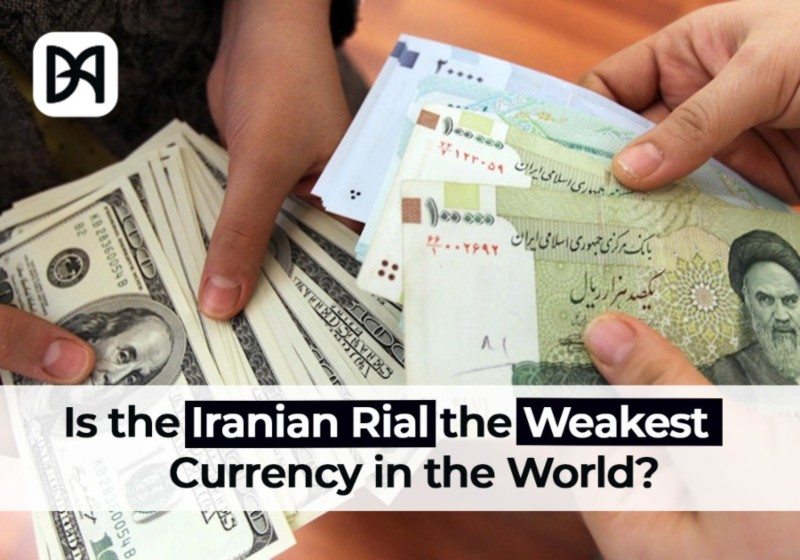In the context of global finance and the currency markets, the Iranian Rial (IRR) is a captivating case that can be analyzed in detail. As for the year 2024, it is regarded as one of the weakest currency in the world where exchange rates can be practically a mystery to foreigners. Furthermore This blog will investigate the causes of the decline of the Rial, its current position, and what it means to the economy of Iran and the people of Iran In general.
Table of Contents
ToggleThe Iranian Currency System
That being said, it would be prudent first to appreciate the complex nature of the currency problem in Iran. This country has in fact two official currencies:
The Rial (IRR): The basic currency
The Toman: A super-unit which is 10 Rials
Though this system creates ambiguity for foreigners, it is well understood in Iran. In most cases, price discussions among Iranians are in Toman while in most if not all official documents, the currency appearing is the Rial. However, difference is very important when it comes to understanding exchange rates and economic statistics.
Current Exchange Rates: Dollar to irani rial
The numbers tell a stark story. In early 2024 the exchange rates illustrate extreme currency devaluation:
1 Dollar in Irani Rial above 500,000+ Iranian Rials (official rate)
1 US dollar to Iranian Toman approximately 50,000+ Tomans
Yet, even these official figures cannot be understood in their totality. The Iranian rial currency market is structured on many levels:
Official Rate: The average exchange rate fixed by the Central Bank of Iran
NIMA Rate: The rate used for purposes of importing basic goods
Black Market Rate: The rate used in most transactions in the actual economy
As a result the black market rate is much greater than the official rate, with reported differentials of 20% and above. This multiple exchange rate regime is symptomatic as well as causative of the weakness of the currency.
Historical Context:
Dissecting the history of the Iranian rial currency and how it became the weakest currency in the world is not a one-day task as it is quite a lengthy process. Let’s explore the critical historical stages:
Pre-Revolution Era (Before 1979)
The Rials had a somewhat steady position, Dollar to irani rial is about 70 Rials per USD Iran’s economy was interrelated with other economies.
Post-Revolution Period (1979-2000)
However the first post-Revolutionary decline – before all, the Iran-Iraq War (1980-1988) Imposition of the first international restrictions Exchange rate devaluation was on the rise.
Modern Era (2000-Present)
Global restrictions continued Enlargement of disagreements concerning the nuclear program Exclusion of liberties on the banking sector Scary rise in the rate of depreciation of the Iranian rial currency.
Factors Contributing to the Rial’s Weakness
International Sanctions
One of the factors that has made the Dollar to irani rial weak is the all-embracing international ‘sanctions’ structure. The sanctions have:
- Reduced Iran’s capability to sell its oil
- Closed up the international banking systems to the country
- Uncovered Iranian properties held outside the country
- Exacerbated the problems associated with trading globally
- Exited foreign investors from the market.
Economic Structural Issues
The problems within the country’s economy also added to the problems faced with the currency.
- Over-reliance on crude oil sales
- Narrow based economy
- Sky-high inflation
- Government subsidization schemes
- Grossly unproductive government-owned firms.
Banking Sector Problems
There are several problems associated with the Iranian banking sector:
- Poor quality of loans
- Access to SWIFT is restricted
- Inefficient banking operations
- Hinders the execution of overseas transactions
- In doing so, current foreign currency reserves are low.
Political Uncertainty
Additionally some geopolitical issues affect the exchange rate.
- Geopolitical issues within the region and without it
- Negotiations about the nuclear program and its enforcement
- Changes in governmental policies
- Foreign relations
- Government management of socio-economic and military crises
Impact on Daily Life
A Weak Currency has many consequences for the Iranian people:
Cost of Living
- Only basic goods are cheap and prices of are always growing
- Any sort of savings is subject to rapid depreciation
- Rising property prices ‘in real terms’
- It becomes expensive to consume products that the country does not produce.
Business Operations
- Difficulty in international trade
- The challenge in maintaining stable prices
- Problems with long-term planning
- Issues with inventory management
Social Impact
- Accelerating social gap
- Outcomes of professionals Migration
- Decrease in the standard of living
- Shift in spending habits
- The effects of an economy with persistent inflation on individuals
Government Response Measures
To tackle the depreciation of its national currency, the Iranian government has introduced several strategies as follows:
Foreign Exchange Management
- Different exchange rates for the same currency
- Limiting the use of domestic currencies in exchange
- Laws concerning transactions in gold and currencies
- Restrictions on the trade of goods and services with foreign countries.
Monetary Policy
- Adjustment of the interest rate
- Control of money growth rate
- Changes or restructuring in the banking system
- Modifications of working reserves.
Economic Reforms
- Changes in the entitlement scheme
- Encouragement of local manufacturing
- Strategies for increasing the level of exports
- Strategies for decreasing the level of imports.
Comparison with Other Weak Currencies
Of all these weak currencies, the Iranian Rial is among the most useless currencies other remarkable cases should be put into consideration:
- Venezuelan Bolivar
- Lebanese Pound
- Syrian Pound
- Zimbabwean Dollar (historical case)
Common factors among these currencies include:
- Political conflicts
- The presence of economic blockades
- Existing high rate of inflation
- Not favorable for trade
- Presence of problems in the banking sector
Future Prospects
Several elements will determine the future of the Iranian Rial:
Potential Positive Catalysts
- Sanctions Relief
- Decreasing tension about nuclear politics
- Resolution of contacts with foreign superpowers
- Withdrawal of contributed wealth from foreign banks
- Further use of the commodity
- Change of policies on economic restructuring
Economic Reforms
- Modernization of the banking industry
- More liberalization of the economy
- More efficient and independent Central Bank
- Less reliance on oil and related products
International Integration
- Better and enhanced terms of trade
- Encouragement of outside capital
- Transfer of know-how
- Integration of the banking systems
Challenges Ahead
Structural Issues
- Dependency on oil exports
- Inefficient state enterprises
- Subsidy system reform
- Banking sector problems
External Factors
- Oil price fluctuations
- Instability in the region
- International context
- Technological limitations
Lessons for the Global Economy
The case of the Iranian Rial offers several important lessons:
Currency Stability Factors
- Need for globalization
- Importance of proper fiscal measures
- Effects of administrative actions
- Need for different sources of income
Policy Implications
- Anticipative control is inevitable
- There is a need for reform
- Gains from region integration
- Independence of central banks
Economic Integration
- Benefits of global trade
- Impact of financial isolation
- Role of banking systems
- Importance of foreign investment
Practical Considerations for Different Stakeholders
For Iranians
Savings Strategies
- Investments in fixed assets
- Keeping money in foreign currencies
- Investing in the economy
- Dealing with risks
Business Operations
- Setting prices
- Stock control
- Dealing in foreign currency
- Bidding
For International Businesses
Risk Assessment
- Managing exposure to foreign currencies
- Assessing forms of payment
- Legal issues
- Ways to penetrate the market
Operational Strategies
- Strategies that involve working with others
- Managing payment conditions
- Handling risks
- Oversight systems of the targeted market
Conclusion
The Iranian Rial’s history provides an interesting illustration of how currency depreciation and its accompanying economic predicament can be studied. It highlights the influence of international relations, domestic policies, and financial variables vis-a-vis a nation’s currency. While the latter awaits time to shape, it is a situation that offers enough teachings to policymakers, economists, and market players across the globe.
For one, the risks of currency stability in Iran will most probably involve some international diplomatic advances, economic reforms within the country, and precise management of monetary policy. Until that point in time arrives, the Iranian Rial which is regarded as one of the weakest currencies in the world still poses both risk and opportunity to several players.
Furthermore, It is important to understand this issue not only for the citizens or residents of Iran, but also for anybody who is interested in issues of international finance, monetary policy, or the global economic system. The history of the Iranian Rial shows very well that many other issues outside currency may have a bearing on its stability which is why it is worth studying and understanding.






